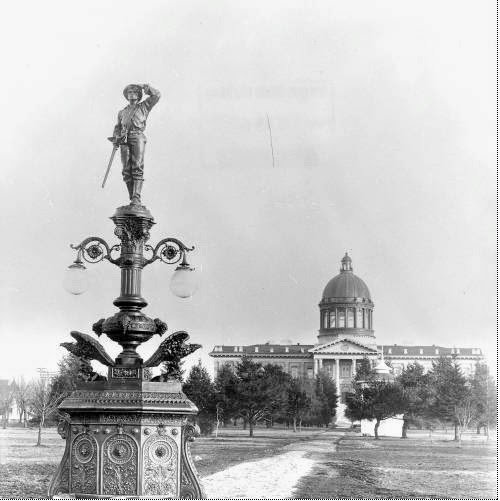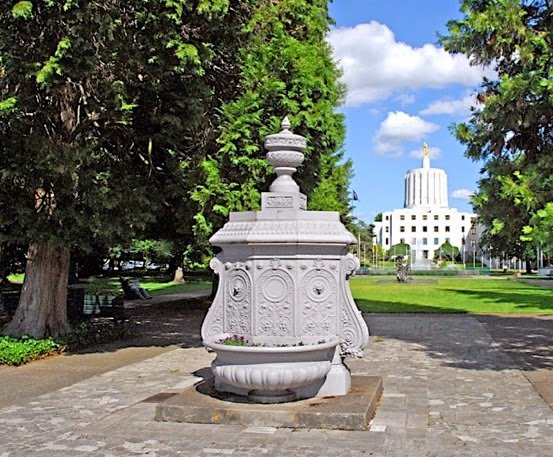World Events
- A surprise attack at Port Arthur in Manchuria by Japanese navy destroys Russian fleet and begins war with Japan. (Co-incidentally,”Madame Butterfly” opera debuts at La Scala in Milan this year.)
- Theodore Roosevelt is elected as President. He proclaims U. S. will intervene if any Latin American government proves “unstable or incapable”. (Prize-winning Roosevelt biography: Mornings on Horseback, David McCulloch, 2007)
- US Army engineers renew work begun by France on the Panama Canal.
- Fires destroy Alesund, Norway, 1500 buildings in Baltimore, and much of downtown in Toronto, Canada.
- Louisiana Purchase Exhibition World Fair is open all year in St. Louis, Missouri.
- The Ford Model A is replaced by the Model C, but autos continue to be built in their original location, Ford Mack Avenue Plant in Detroit: price for two-seater “runabout” is $800.
- Longacre Square in New York City is renamed Times Square ( for New York Times newspaper) and the first New Year’s celebration is held there on Dec. 31.
- Best New American Books: The Sea-Wolf, Jack London; Cabbages and Kings, O. Henry; The Golden Bowl, Henry James. Scottish writer, James M. Barrie creates Peter Pan as play for the London stage.
In Salem
The Breyman Brothers Fountain is erected on Cottage Street at the western edge of Willson Park. The cast-iron statue and fountain were designed as a memorial to the soldiers of Spanish-American War. Because of its practical function in its early years, it became widely known as the “Breyman Horse Trough” (there is also a lower basin for dogs on the opposite side). From the Breyman brothers’ residences, both near Cottage on State and Court Streets, they could see the fountain from their front porches. Their sister Louisa Waite, from her residence at the Winter and State Street corner, could admire it as well.
When you visit
The State House of this photograph burned in 1935 and was replaced with the present Capitol, facing north and in a different architectural style. At the fountain, you will notice the statue and lamps, originally bolted to the top, have been lost: a descendant of the family thinks this section fell off and then was melted down for the World War II scrap metal effort. The Breyman Brothers Fountain was listed on the National Register of Historic Places in 1989. Werner Breyman’s residence was to the south, at the corner of Cottage and State Streets ~ the Micah Building is there now. Eugene Breyman’s residence was to the north at the corner of Court and State Street ~ that, too, is gone. The area between their homes was at the rear of the old Post Office and they could see each other’s house across the expanse of lawn.
Other events
- Frank W. Waters becomes mayor. In November of this year, the mayor persuaded the Salem City Council to grant the Salem Woman’s Club the use of the east end of the city council chamber for a library, “provided it should not cost the council anything.”
- Chinatown, on the east side of Liberty between Court and State Street, is razed after having been condemned by the city because of concerns for health and safety. The community continues for another twenty years along the west side of High Street between State and Ferry Streets.
- A house is built on Chemeketa Street family property for Elizabeth Watt, daughter of Joseph. After her death in 1925, the house was involved in the lawsuit to restore it to her heirs. This NEN neighborhood property still contains Garland Hollowell’s greenhouse, built for his beautiful garden of 31 years (1936-67).
- On Garden Road (now Market Street), the Harris family builds a residence using the plan of a house the family had in Idaho. The home site had been a part of the John Baker Donation Land Claim and a later purchase by the Harrises increased their farm to 20 acres extending to the fairgrounds. Mr. Harris was one of the first farmers to raise Angora goats in Salem. After the deaths of Mr. and Mrs. Harris, the house became the home of their daughter, Minnie, and her husband Emil Graber. Mrs. Graber continued to live in the house into the 1950s. This NEN neighborhood house is now a Local Landmark.
 |
| Alford-Bartleson House |
- A turn-of-the-century farmhouse, now almost downtown, is the Alford/Bertleson house on Leffelle Street in the SCAN neighborhood. This rural frame residence was built by Michael Alford, and then became the home of John Bertleson and Jessie from 1922 to 1934. He was a well-known local printer. Of note are the stone chimney, veranda porch and multilevel, steeply pitched gable roofs. It is a Local Landmark.
- Across from the Eyre residence, a home now only known as “Grandmother’s House” is built on 21st. Street. Many of the most prominent Salem families lived in this area of Salem at this time, but the owners during the first thirty years in the life of this house are unknown. By 1958 Fannie G. Diamit was living here. Her granddaughter remembers the house well. In 1991 a family with three daughters moved here, also enjoying happy memories of this home. Additions have been made to the rear of the house, but the front has remained essentially the same architecturally. Of special interest is the decorative metal frieze lining the roofline of this porch. It is in the SESNA neighborhood.
From the Capitol Journal:
- “Hundreds of Salemites go to the 4:20 Sunday afternoon train to see a friend off. That is Salem’s Sunday theater.”
- Labor Commissioner O. P. Hoff compiled a list of occupations in Marion County. There were 53 attorneys, one architect, 202 carpenters, 43 doctors, 2,607 farmers and farmhands, 230 merchants, 5 photographers, 55 stage employees, 57 saloon keepers, 6 electricians and 1 peanut roaster.
- A local ad for Made in Salem stated that La Corona cigars were like Republican election returns ~ they leave a good taste and pleasant memories.
- Joseph Meyer & Son, proprietors of the White Corner and “home of good goods” introduced flashing red, white and blue electric lights as a December holiday attraction. This feature had not been seen in Salem.
- George pierce, Salem hardware merchant, was seriously injured at McMinnville by an explosion of gasoline beneath his automobile. A quantity of gasoline was spilled beneath his Stanley Steamer, but appeared to have evaporated. When Pearce lit the automobile’s burner, the explosion occurred. [Mr. Pearce survived the accident, dying suddenly in his store in 1912: the victim of a heart attack.]
(See Ben Maxwell’s Salem, Oregon, edited by Scott McArthur, 2006)


